How to deal with spider mites on eggplants?
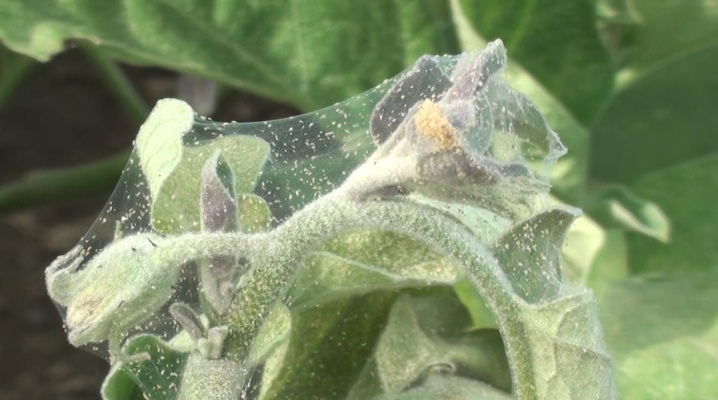
A pest in the garden is a signal for the urgent rescue of the plant that he attacked. After all, even such a small parasite as a spider mite can destroy the crop or significantly spoil it. If a tick appears on eggplants, you need to take action, and this can be a whole complex of interrelated actions.

Description of the pest
The spider mite doesn't look intimidating. He is small, an adult is only 1 mm, but this is bad. He, the pest, can simply be overlooked. It so happens that the eggplant planting has already been damaged, and the farmer just saw the parasite.
The main thing about the pest:
- the spider mite matures quickly - in just a week, which means that the timing of its spread is very fast;
- it settles on the back of the eggplant leaf, and multiplies there;
- the tick sucks out all the juices from the plant, the bushes rapidly lose moisture, nutrients, which leads them to death;
- and the tick is also a dangerous carrier of fungi and viruses - it can "deliver" the plant gray rot, anthracnose, late blight;
- the damaged parts of the plant die, vital chlorophyll is not formed in them, the processes of photosynthesis slow down.

The rapidly growing parasite pierces the leaf tissue and sucks the plant sap out of it in a short time.
By the way, the tick is not an insect - it is arachnid, that is, it is correct to attribute it to animals. And you definitely need to fight with it: even if the tick just makes a puncture on the sheet, this wound will become a gateway for infection.
Obviously, such a small creature is difficult to notice - it is easier to find a cobweb, its defining feature. This is a product of the tick's vital activity, and its habitat. The cobweb appears on the bottom of the leaf, it is very thin and almost transparent. Comparing it with an ordinary web is not entirely correct. Indirectly, the appearance of white dots on the leaves and their rapid drying out can indicate a spider mite.
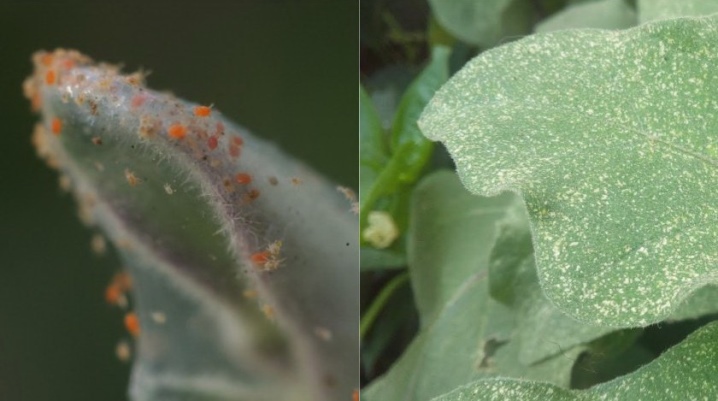
Signs and causes of appearance
Alas, the first signs are noticed when the pest has already actively attacked the plant. You need to focus on the following indicators:
- thin and delicate cobweb under the sheet;
- gradual drying of the tops - that is, the affected leaves (perhaps they also turn yellow);
- tiny white dots on the leaves, but over time they will grow into marble spots;
- pronounced slowdown in the growth of the bush;
- general wilted and sickly plant appearance.
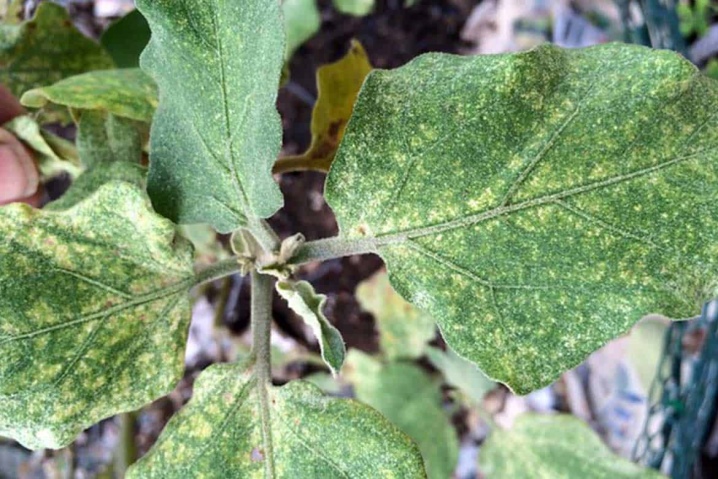
A tick, which has already appeared on an eggplant, goes through 4 stages of development in just a week: egg, larval, nymph stage and, finally, adult.
If a tick appears on seedlings, this is an alarming moment, with its appearance the plant quickly weakens. The immunity of the culture will not withstand the subsequent load and diseases that the pest will bring with it or contribute to their appearance.
For a tick to appear on eggplants, you need a high temperature (26 degrees is already enough) and humidity below 55%. These conditions are ideal for the growth and reproduction of the parasite. But in a damp and cold climate, it will not develop, but simply wait out this period. When the cold weather becomes persistent, the fertilized female ticks form strong orange-colored clumps wrapped in cobwebs. So they winter safely. In the spring, ticks lay eggs, and after a couple of weeks a new generation of parasites will emerge from them.
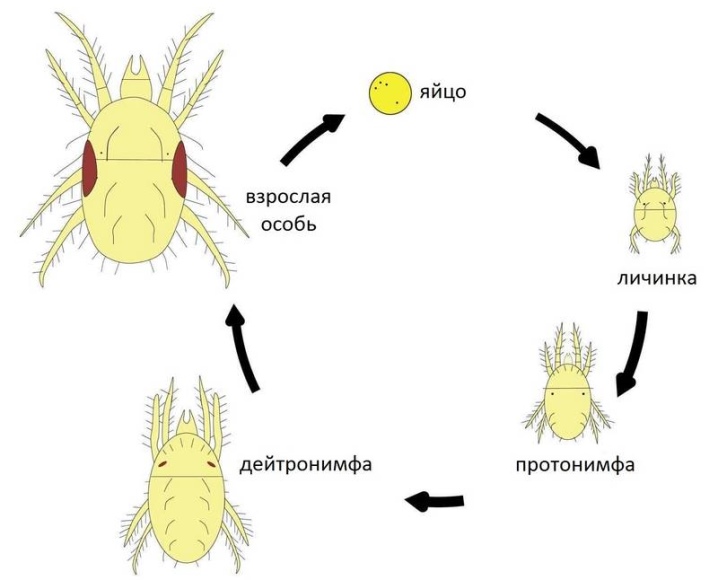
Control measures
The mite infects eggplants both growing in the greenhouse and in the open field. You can treat them in different ways, you need to consider all the measures exactly.
Agrotechnical control method
It consists in organizing optimal development conditions for plants, and unbearable conditions for a potential pest. This method is absolutely required to be applied, because it is the original one.
How to deal with a tick:
- dig up the soil in autumn and spring;
- be sure to remove plant residues - that is, roots, tops, dried inflorescences, fallen leaves, rotten vegetables and fruits, the removed must be disposed of;
- remove weeds regularly, constantly, without waiting for their growth (they can be burned or fed to animals);
- water and spray the eggplants regularly, because the mites really do not like moisture.
Of course, plants need to be inspected almost every day to find out if a pest has appeared on them. The minimum is to do it at least once every 3 days. If eggplants grow in a greenhouse, then maintaining high humidity is already a strong blow to the mite.
If vegetables are grown for marketing, and there are several greenhouses, there should be at least a meter between them. This distance will make it difficult for pests to move from greenhouse to greenhouse.
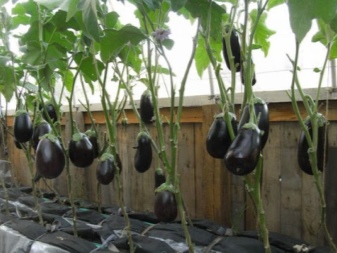

Biological method
Biologicals are products with specific substances that help get rid of a specific pest. They are convenient and easy to use, do not accumulate in fruits, therefore, within a few days after processing, eggplants can be picked and eaten.
Let's list the most demanded biological substances against ticks.
- Akarin. It is a soil fungus sold as a solution. It acts quickly, after a couple of days the result is noticeable. That is, it is quite possible to overcome the entire colony of the parasite in a week.
- Aktofit. This agent causes paralysis in the pest, acting on its nerve cells. It is used only in dry weather, as it decomposes in a humid environment. Does not affect the larvae. It cannot be considered safe for bees, therefore it is better not to use "Aktofit" during flowering.
- Fitoverm. The drug also affects the nervous system of the tick, and within 10 hours after treatment, it dies. Since it kills only adult pests, the procedure should be repeated after a week.
- "Bitoxibacillin". This is a well-known biological agent with a quick effect, it acts on both adult ticks and their larvae. Wait for the result in 3 days. Re-treatment after a week is also required.
- "Kleschevit". Sold as a concentrate to be diluted with water. It is used for spraying eggplants. It works against adults and larvae. Gives the opportunity to overcome the tick in a week.
Cheap and affordable biological products also include "Agravertin", "Iskra Bio", "Vermitic".
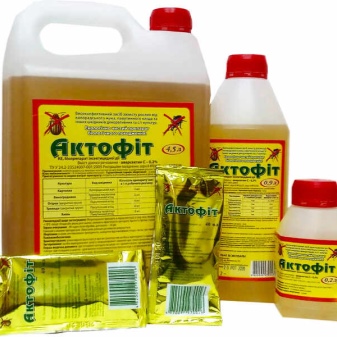
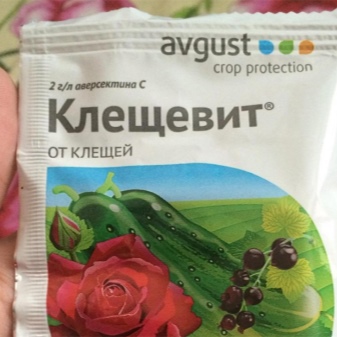
Chemicals
It happens that simpler methods do not work, and, there is nothing to do, you have to use chemical insectoacaricides. Of course, the main condition for their use is strict adherence to instructions, as with a potent medicine.
Let's consider what these means.
- "Nissoran". Not the most effective, but if there is nothing else, you can use it. It will take about a week and a half to fight the pest.
- Floromite. Acts on adults and larvae, the plant can be saved in 3, or even 2 days. They should process eggplants only twice, no more. The tool gives protection to bushes for 3 weeks.
- Sunmight. Within an hour after treatment, the tick begins to die, the effect will last 6 weeks. Rain will not wash off the product. You can use it only when the eggplant flowering period is over.
- Actellik. A drug known to many gardeners, it acts very quickly - by the end of the first day, the colony of spider mites surrenders. The solution requires the most careful use, since its toxicity is very high.
- Colloidal sulfur. Perhaps the most risky of the above - does not promise a 100% result. Less effective on dry days.
Important! Gloves, respirator, goggles when using chemicals are mandatory protective equipment for a person. After processing, you need to thoroughly wash your hands and hide the remaining product, making it inaccessible to children and animals.
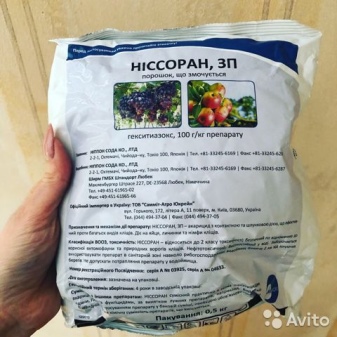
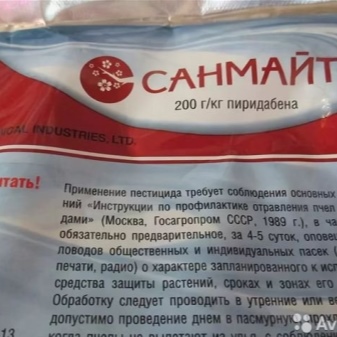
Folk remedies
If you don’t want to buy anything, or the farmer’s setting for the most gentle, but effective measures, it’s time to use the so-called folk recipes. Let's list them.
- Soap solution. For 10 liters of water, 100 g of soap is taken, which is preliminarily ground on a grater. The composition is well mixed, it is infused for a couple of hours. Affected plants should be sprayed with a ready-made solution. And after 3 hours with a watering can with clean water, the eggplants are washed with the usual watering.
- Bitter pepper. Stir 100 g of hot pepper in 1 liter of water. The composition is infused during the day, and then the affected bushes are sprayed with it.
- Dandelion plus horse sorrel roots. In a bucket of water, 150 g of dandelion and sorrel roots are stirred, the infusion should have a daily exposure. After a day, it is filtered, and plants can be processed.
- Onion husks. For 1 liter of water, 100 g of onion husks. Sick bushes are sprayed with this solution.
- Garlic. For 1 liter of water, 2 chopped garlic heads. This infusion must be allowed to stand for 5 days before it can be used to spray the affected eggplant.
And another great way to counter the mite is to plant plants next to the eggplant that the pest does not tolerate. And this, for example, calendula, chamomile, marigolds, dope, yarrow, dandelions.
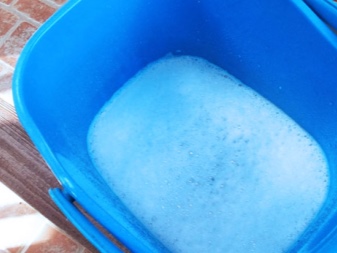
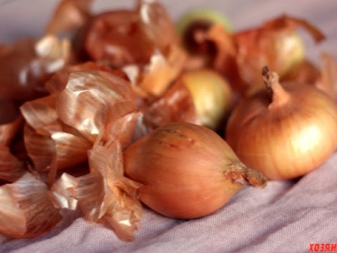
Prophylaxis
Prevention is the best treatment. The agrarian is not always so omnipotent that he can be guaranteed to protect eggplants from spider mites with one prevention. But certain measures may well give a positive result.
How to prevent the appearance of a tick:
- be sure to regularly and in accordance with all the rules to disinfect the greenhouse;
- ventilate the greenhouse - you can even write a ventilation schedule so as not to forget about this important regime moment;
- regularly dig up the soil, remove the remains of the tops from it;
- timely remove weeds;
- sprinkle the eggplant with warm water from time to time.
Dalmatian chamomile can be planted between the beds - this is an excellent tick repellent plant, and fruit-bearing eggplants will look beautiful next to this flower.
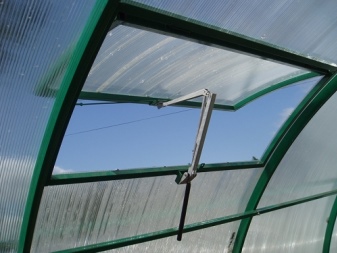

If eggplants grow in open ground, a prerequisite for their successful growth is regular crop rotation. Do not forget about such preventive procedures as treatment with soap or garlic solution 4 times a season. In the greenhouse, you can walk along the frame with a blowtorch (taking into account all safety measures, of course). And also in the greenhouse you need to change the top layer of the soil, where the spider mite prefers to winter.

Resistant varieties
Probably the most persistent, judging by the reviews of many gardeners, will be the Khalifa and Samurai Sword varieties. They are not afraid not only of the tick, but also of the Colorado potato beetle. But still, most varieties (and hybrids as well) do not show enviable resistance to the pest, they are vulnerable to it. Therefore, everything is in the hands of the farmer: how well he knows the basics of agricultural technology, how quickly he can detect a problem, with what logic he approaches the choice of a way to solve it - the future harvest depends on that.
And there is something to fight for. Eggplant isn't just tasty and good in compound dishes. They are able to relieve swelling and remove uric acid salts, stabilize hemoglobin, and reduce the risk of developing gallstones. They also contain valuable chlorogenic acid, which has a very high antioxidant activity.
Good luck in growing!
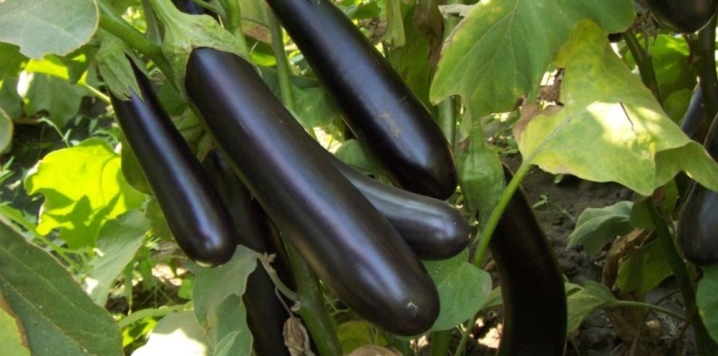
For information on how to get rid of spider mites on eggplants, see the next video.













The comment was sent successfully.